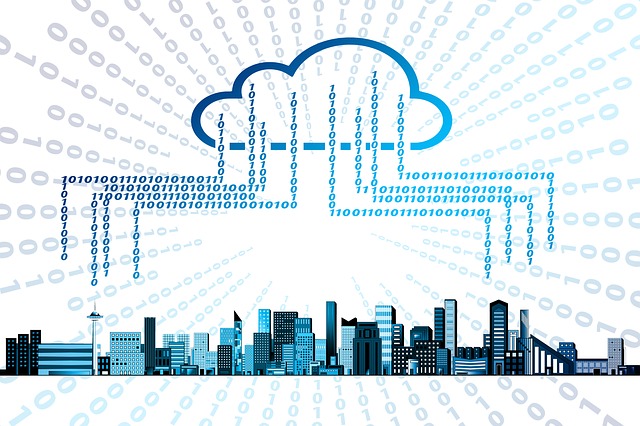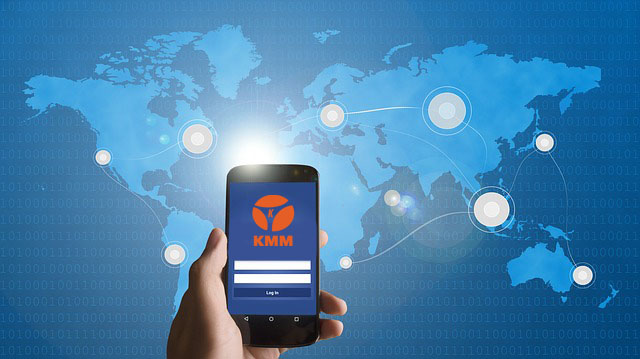
IT Modernization
1) Digital Transformation
 We can define Digital Transformation as future-proofing a business and gain a competitive advantage. It starts with defining the client’s ambition and figuring out the advantage clients will gain from their existing or new business models. This is achieved by innovations to achieve ambition, highly positive income statements, and balance sheet impact along the way. This requires us to bring integrated skills in innovation, human-centered design, digital technology, risks, and overall leadership in a strategic, creative, and adaptive way.
We can define Digital Transformation as future-proofing a business and gain a competitive advantage. It starts with defining the client’s ambition and figuring out the advantage clients will gain from their existing or new business models. This is achieved by innovations to achieve ambition, highly positive income statements, and balance sheet impact along the way. This requires us to bring integrated skills in innovation, human-centered design, digital technology, risks, and overall leadership in a strategic, creative, and adaptive way.
KMM can enable your organization to achieve the measurable outcomes of Digital Transformation such as
- Link outcomes of CAPEX projects to Business Impact and Strategic Vision
- Budget and IT roadmap alignment
- Spend shift towards Innovation and Business Opportunity
- Increase in Budget Process Flexibility.
- Increase in customer satisfaction
- Increase in automation and reduction in manual data interfaces or point to point interfaces
- Decrease in OPEX
- Track shift in skillset and training of resource mix at the organization level
2) Cloud Migration:
 Increasingly, enterprise organizations seek to leverage the myriad advantages delivered by a successful digital transformation. At KMM, we believe that the effective integration of public cloud capabilities is fundamental to this critical journey. By augmenting or replacing on-premise infrastructure with cloud resources, enterprises can eliminate many of the IT-centric constraints that often distract from and sometimes inhibit, their core business. Cloud integration opens the door to simplified IT management, elastically scalable resources, flexible cost models, and innovative new services…ultimately enabling increased operational efficiency and fueling business growth. We assist customers in designing leading-edge cloud solutions with a “business-driven” approach improving IT lifecycle efficiencies, regulatory governance, security architecture design, environmental sustainability, and compliance audit risk.
Increasingly, enterprise organizations seek to leverage the myriad advantages delivered by a successful digital transformation. At KMM, we believe that the effective integration of public cloud capabilities is fundamental to this critical journey. By augmenting or replacing on-premise infrastructure with cloud resources, enterprises can eliminate many of the IT-centric constraints that often distract from and sometimes inhibit, their core business. Cloud integration opens the door to simplified IT management, elastically scalable resources, flexible cost models, and innovative new services…ultimately enabling increased operational efficiency and fueling business growth. We assist customers in designing leading-edge cloud solutions with a “business-driven” approach improving IT lifecycle efficiencies, regulatory governance, security architecture design, environmental sustainability, and compliance audit risk.
In addition, as cloud resources have become broadly and easily accessible, it behooves many organizations to proactively evolve their IT infrastructure to support continued success in increasingly competitive markets. Sometimes, by maintaining an unoptimized status quo, organizations can inadvertently hamper innovation and squander internal capital, thereby increasing exposure to market disruptors and aggressive competition.
However, a well-executed cloud migration strategy should do much more than keep you competitive…it should also position you to excel by untethering IT staff from low-value, labor-intensive tasks, allowing them to focus on innovation and high-impact projects. Also, replacing (or supplementing) legacy systems with modern technologies can reduce complexity and cost, while also positioning you to leverage cloud-native tools to achieve enhanced business intelligence and key strategic insights. Finally, with nearly unlimited scalability at your fingertips, applications can scale up and scale down on-demand, while you pay only for what you consume. This allows you to maintain a continuously right-sized cost profile, while also accelerating development and reducing procurement cycles. Each of these benefits can yield tremendous value to your business which, after all, is the goal of a cloud migration
KMM can help to perform effective discovery and assessment to ensure a clear understanding of your current application stacks and underlying infrastructure. Then we’ll help you leverage that information to define the first steps for transforming your existing applications and workloads and take you to the cloud migration journey. Our consultants are fully capable of reducing your risks and increasing the value proposition for any of the cloud deployment models like private cloud, public cloud, community cloud, and hybrid cloud.
In addition, KMM provides training to our customers in the areas of security, cloud computing, and compliance based on the well-established COBIT, NIST frameworks, and CSA guidelines. KMM’s cloud compliance team can identify resources to assist your company to comply with the required standards of cloud deployment whether it is FedRamp or any other standard.
3) Robotic Process Automation:
 Robotic Process Automation (RPA) uses computer software or “robots” to perform repetitive rules-based tasks. They can boost capabilities and save time. RPA is similar to Excel macros, yet not limited to using only Excel files. RPA has gained popularity for its ease of implementation, rapid deployment, and ability to deliver immediate, measurable results. Examples of tasks that RPA can perform automatically (include): opening an email. downloading an Excel attachment and copying data from a file into an Enterprise Resource Planning (ERP) or Customer Relationship Management (CRM) system.
Robotic Process Automation (RPA) uses computer software or “robots” to perform repetitive rules-based tasks. They can boost capabilities and save time. RPA is similar to Excel macros, yet not limited to using only Excel files. RPA has gained popularity for its ease of implementation, rapid deployment, and ability to deliver immediate, measurable results. Examples of tasks that RPA can perform automatically (include): opening an email. downloading an Excel attachment and copying data from a file into an Enterprise Resource Planning (ERP) or Customer Relationship Management (CRM) system.
Process Robotics is more robust than a Script and is simpler & easier to implement than Advanced AI, which is the most complex and transformative form of Digital Labor. Key characteristics of Process Robotics are:
- Bots are programmed to perform repeatable tasks
- Process Robotics operate effectively in the User Interface Layer
- Process Robotics replaces human interactions with proven technology
- Process Robotics can be implemented on the desktop or the virtual environment
RPA value drivers include:
- Freeing of work hours
- Avoiding penalties resulting from human error in reporting tasks
- Improving employee morale by allowing employees to focus on engaging, high-impact tasks
- Reassigning works to higher-value activities
- Increasing the availability/volume of data
4) Low-Code Application Development
 Low-Code allows enterprises to build capabilities and reap benefits faster: In today’s technical landscape, organizations need to innovate rapidly and take ideas to market faster so that customers can have the best possible digital experience. However technical delivery is resource-intensive and innovation centers find it challenging to support the rapidly evolving business environment.
Low-Code allows enterprises to build capabilities and reap benefits faster: In today’s technical landscape, organizations need to innovate rapidly and take ideas to market faster so that customers can have the best possible digital experience. However technical delivery is resource-intensive and innovation centers find it challenging to support the rapidly evolving business environment.
Low-code solutions platforms help enable innovation by reducing the financial and talent resources required to build minimum viable products (MVP) and digital enterprise-grade solutions. As the application market grows, low-code solutions provide an opportunity to bring concepts to market quickly and test earlier so that a product-market fit can be established much earlier in the delivery cycle.
According to Forrester Research, the total spending on this category is forecasted to hit $21.2 Billion by 2022, representing a compound annual growth rate of roughly 40%.
KMM is partnered with Appian which received positive scores across all critical capabilities, with excellent scores for enterprise worthiness and back-end data, logic, and process in a Gartner report published in October 2019. KMM can develop and deploy Low-Code Appian solutions up to 20x faster. Drive innovation at unprecedented speeds. Design apps with a mouse click, using reusable components to build quickly. KMM’s Appian platform developed apps to run even the most mission-critical and complex processes.
- Visual Design – Drag-and-drop and point-and-click tools deliver apps incredibly fast, allowing for easy iteration.
- Process Models – Draw business processes instead of coding them, dramatically improving collaboration between IT and business.
- Reusable components – Build each successive app faster, leveraging reusable components from other apps.
- Prebuilt UIs – Leverage or enhance existing UIs to delight your end-users.
- Automatically Mobile – No more designing for mobile, web, Mac, PC, iOS, and Android separately. Design it once and it works natively on all devices.
- Future Proof – Applications built are automatically upgraded to ensure compatibility with future operating systems, browsers, mobile devices, and UI technologies.
- Cloud Functionality – Appian Cloud runs on AWS, while support for Microsoft Azure and Google Cloud Platform is on the vendor’s roadmap. However, Appian is a single-tenant architecture and multi-tenancy is only at the hardware level, with each tenant being isolated in their own containers or virtual machines.
- Intelligent Automation – Intelligent automation combines the speed and power of BPM, machine learning, and RPA with low-code development to crush your business goals, optimize customer experience, and set you apart from the rest of the pack.
